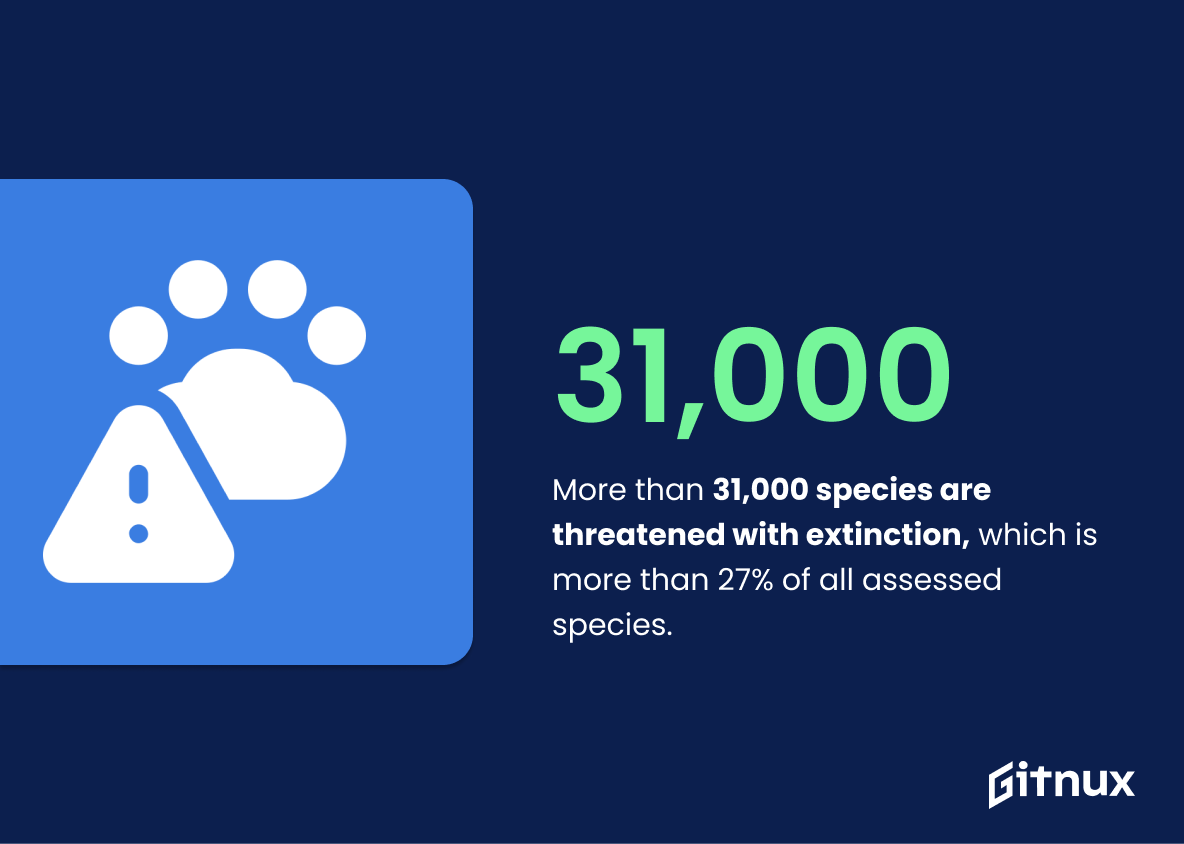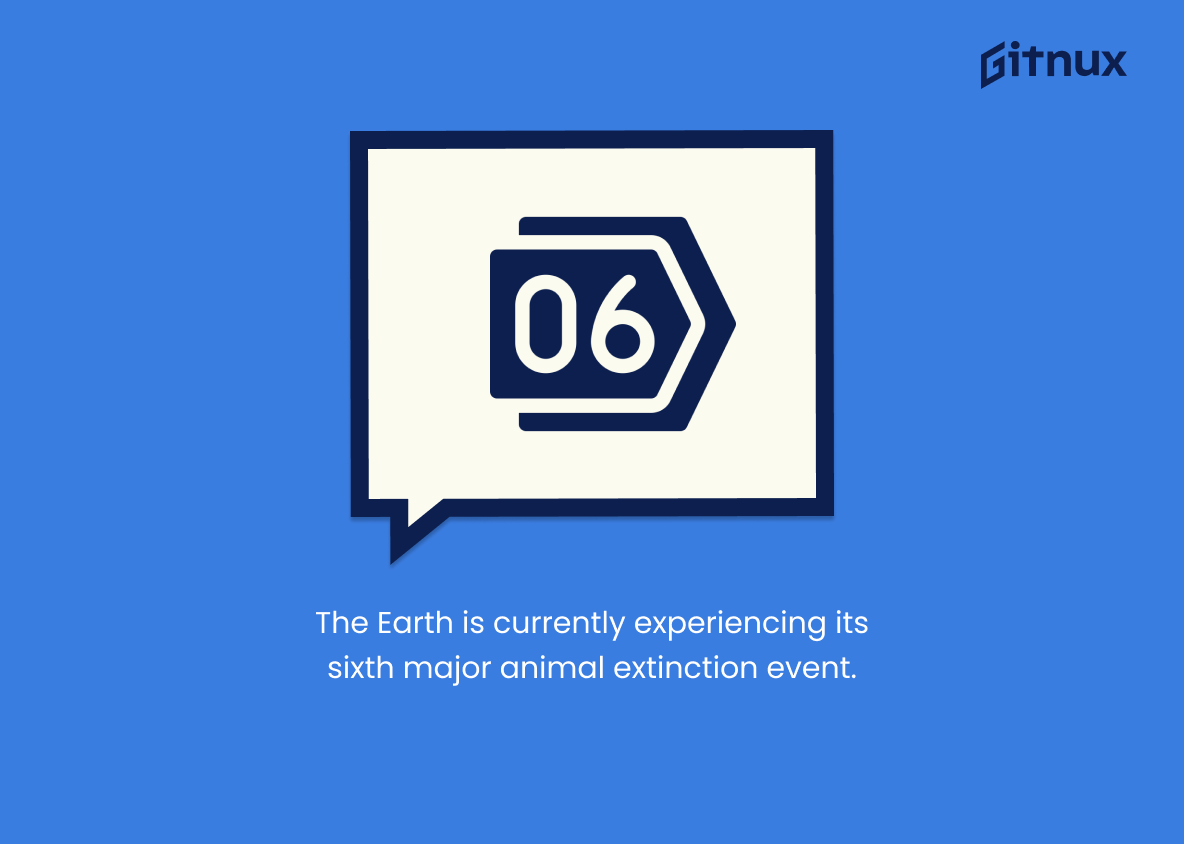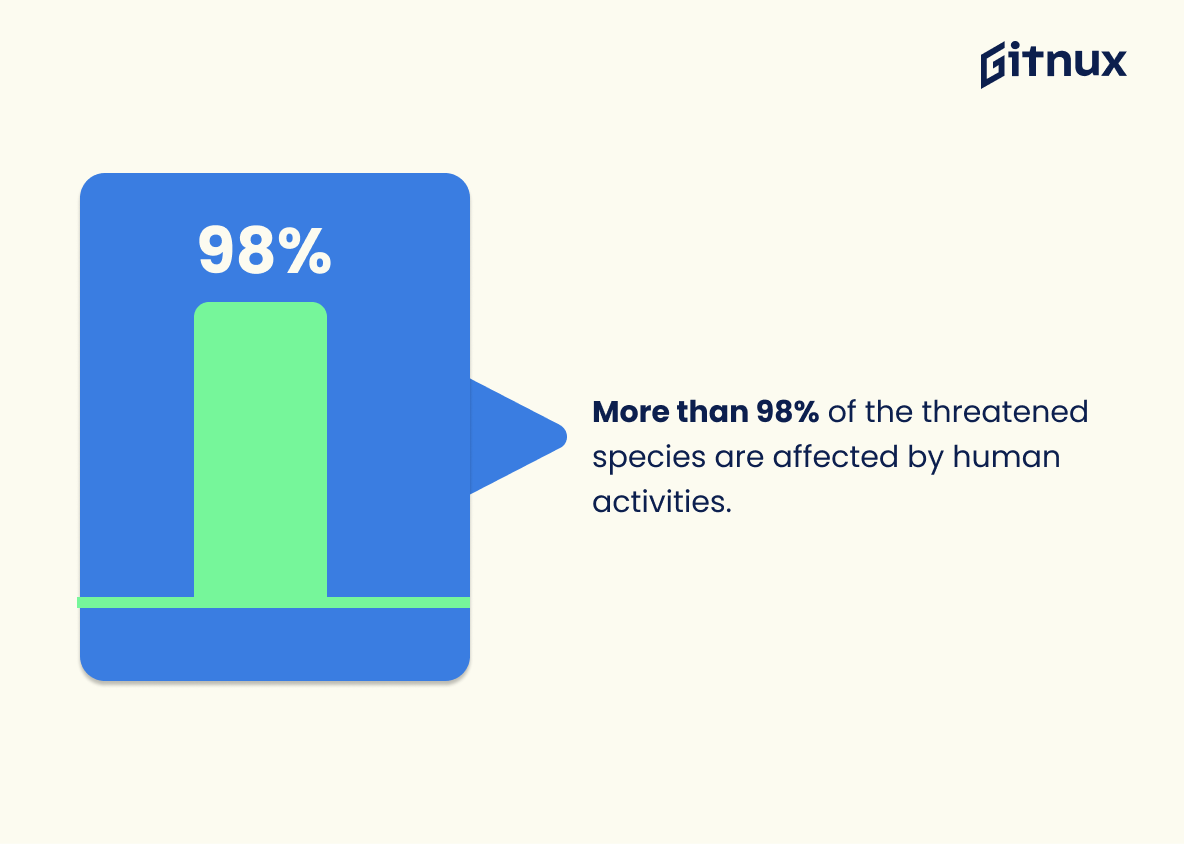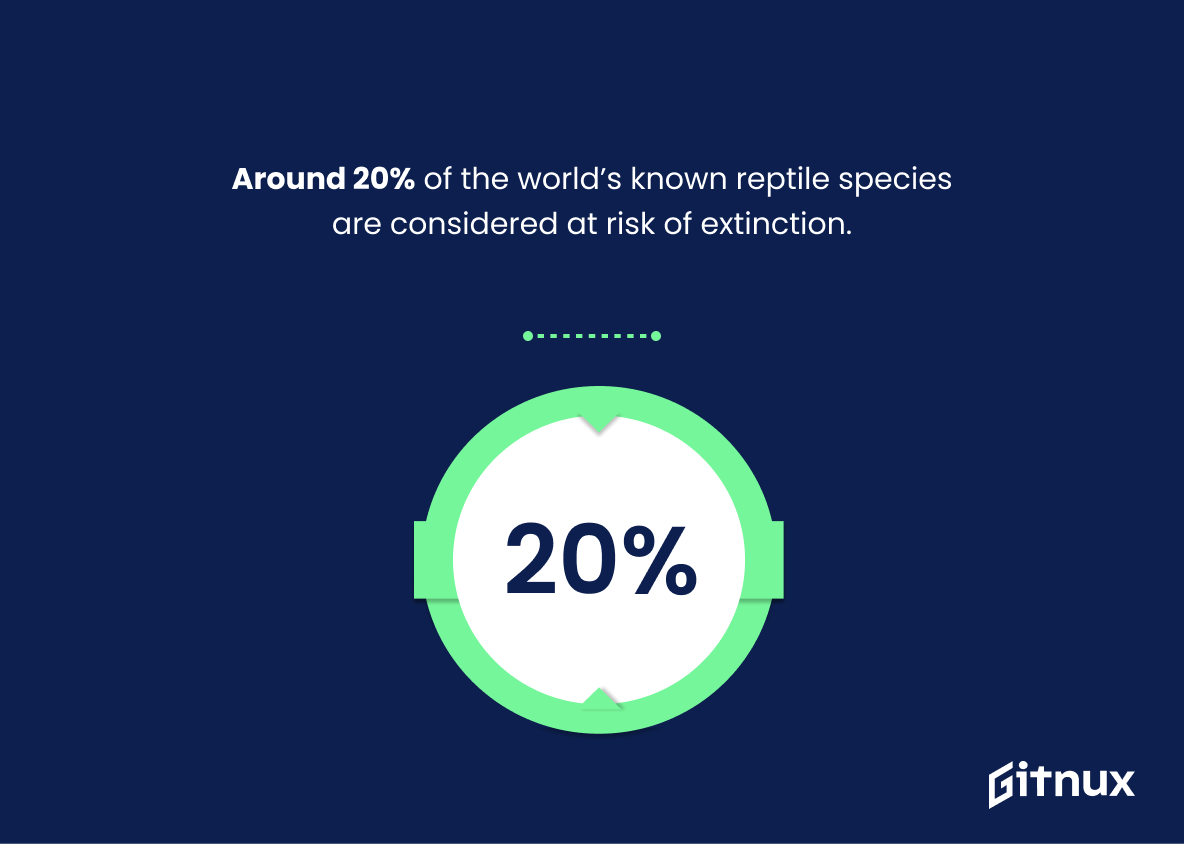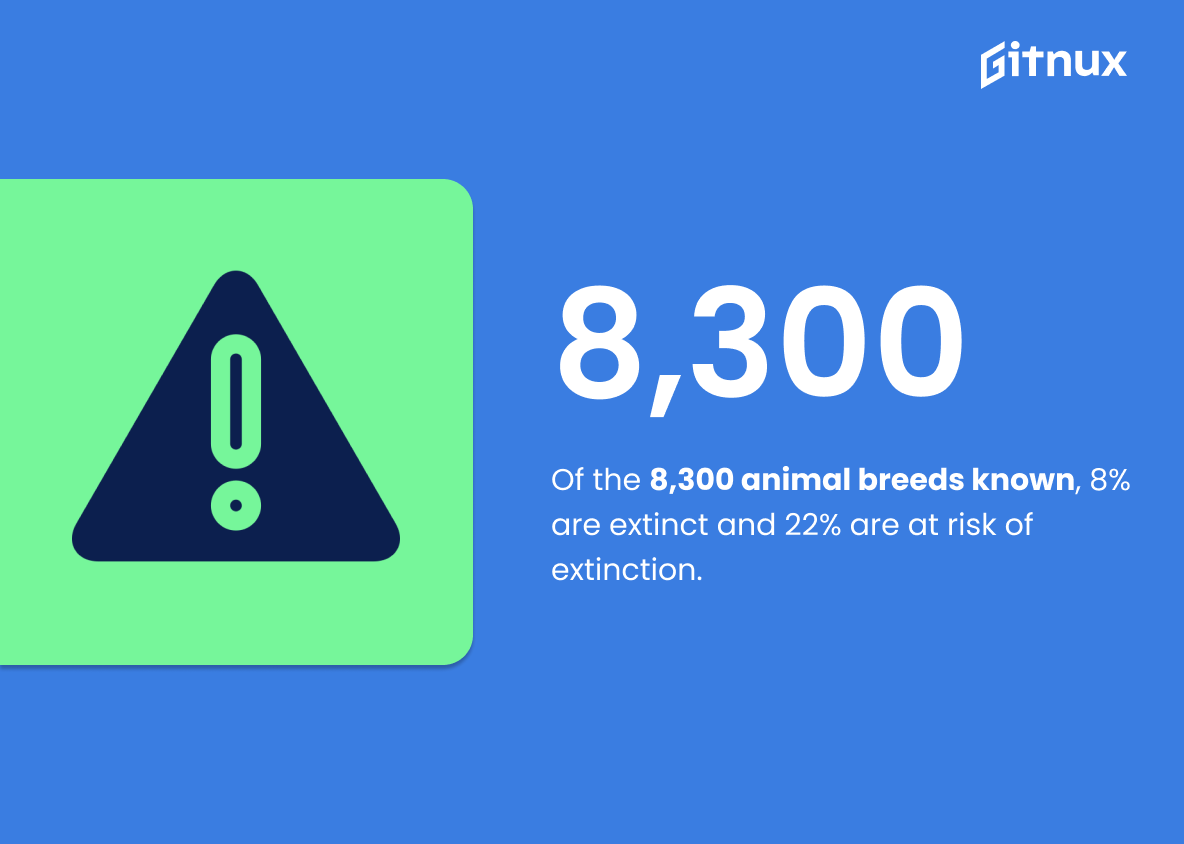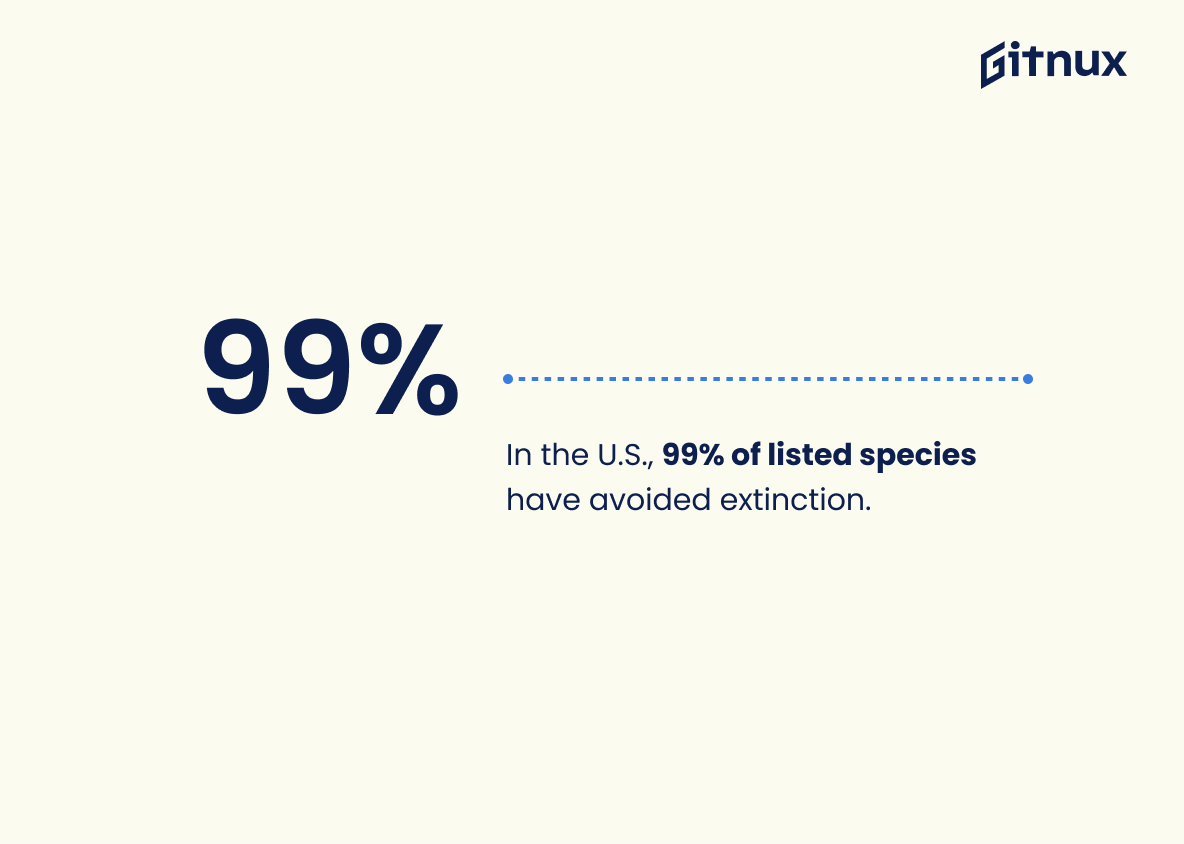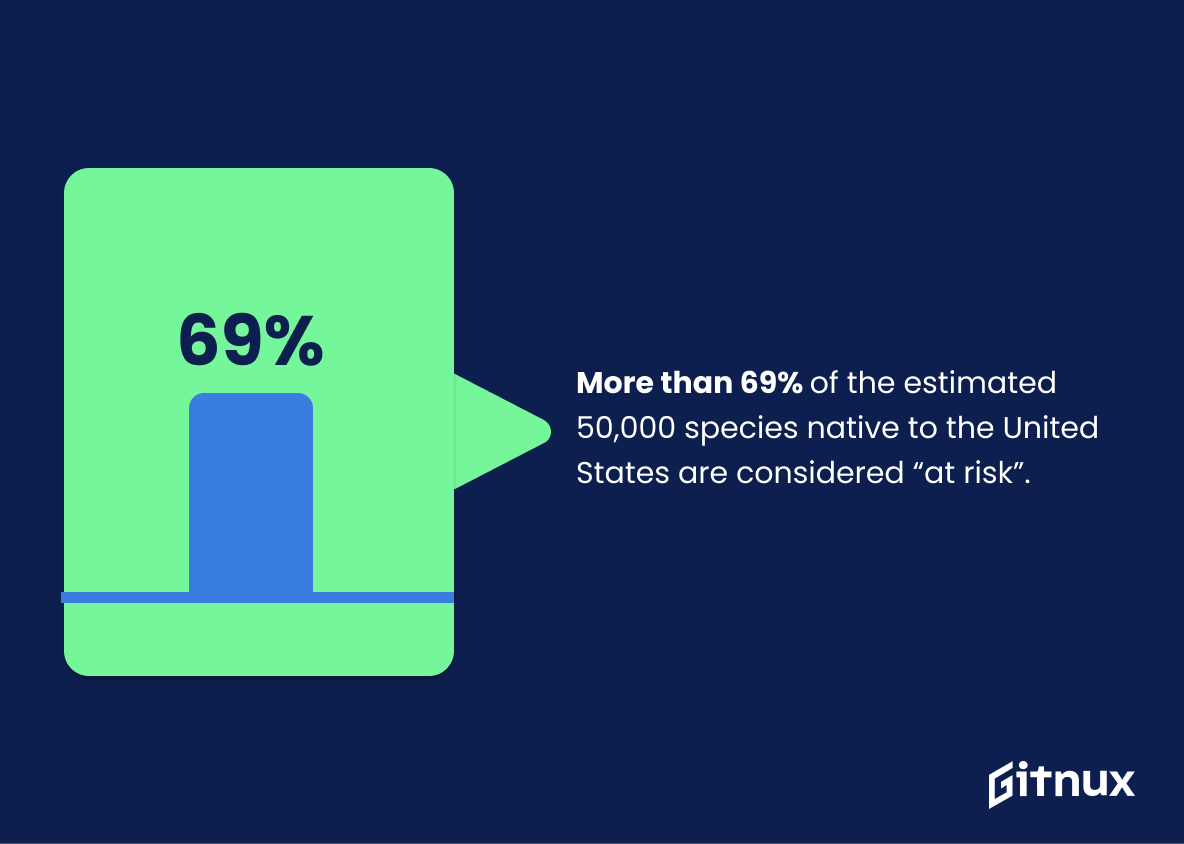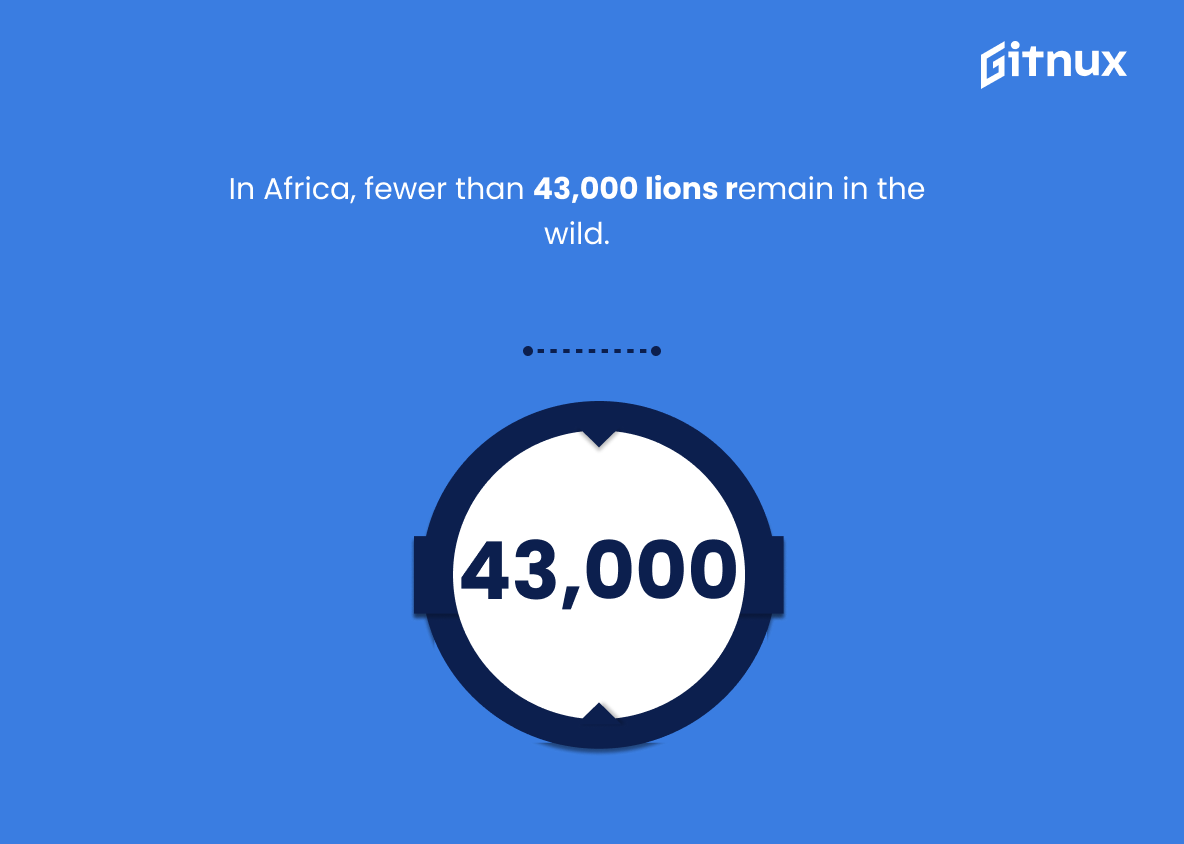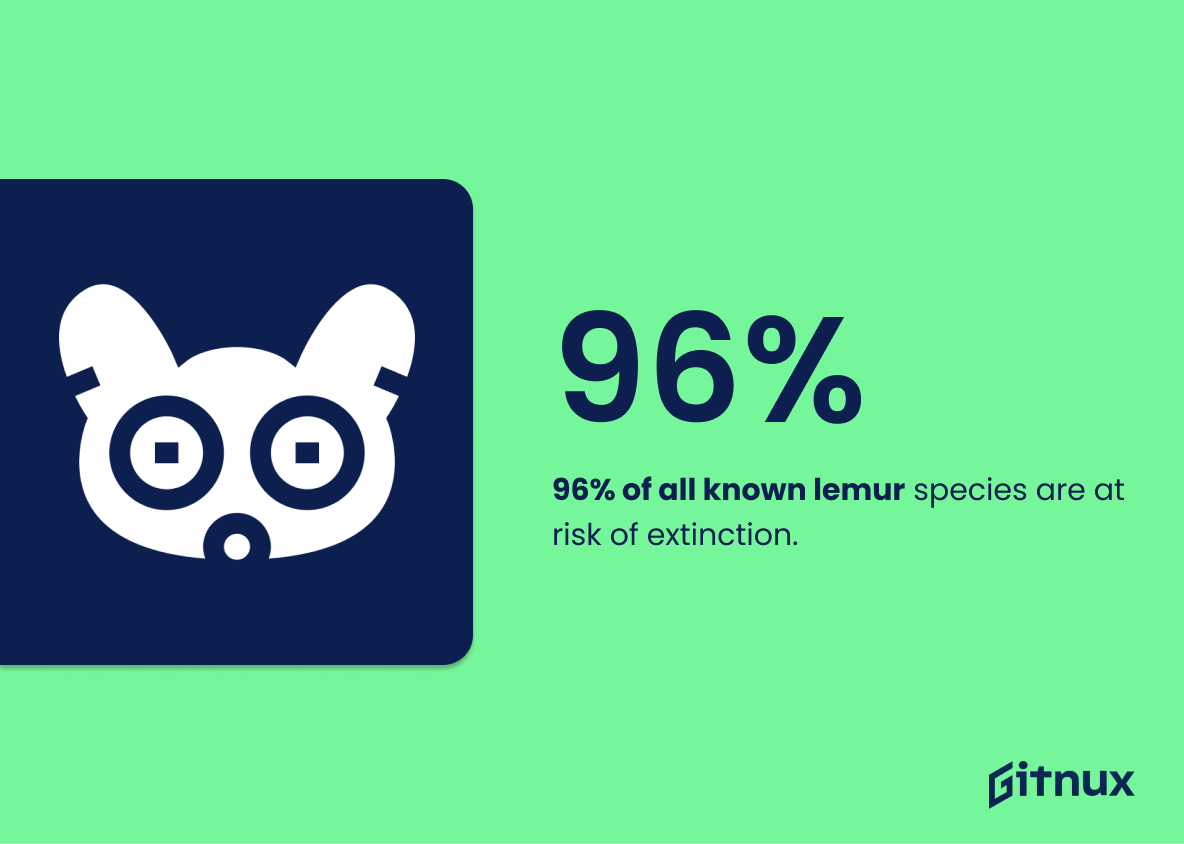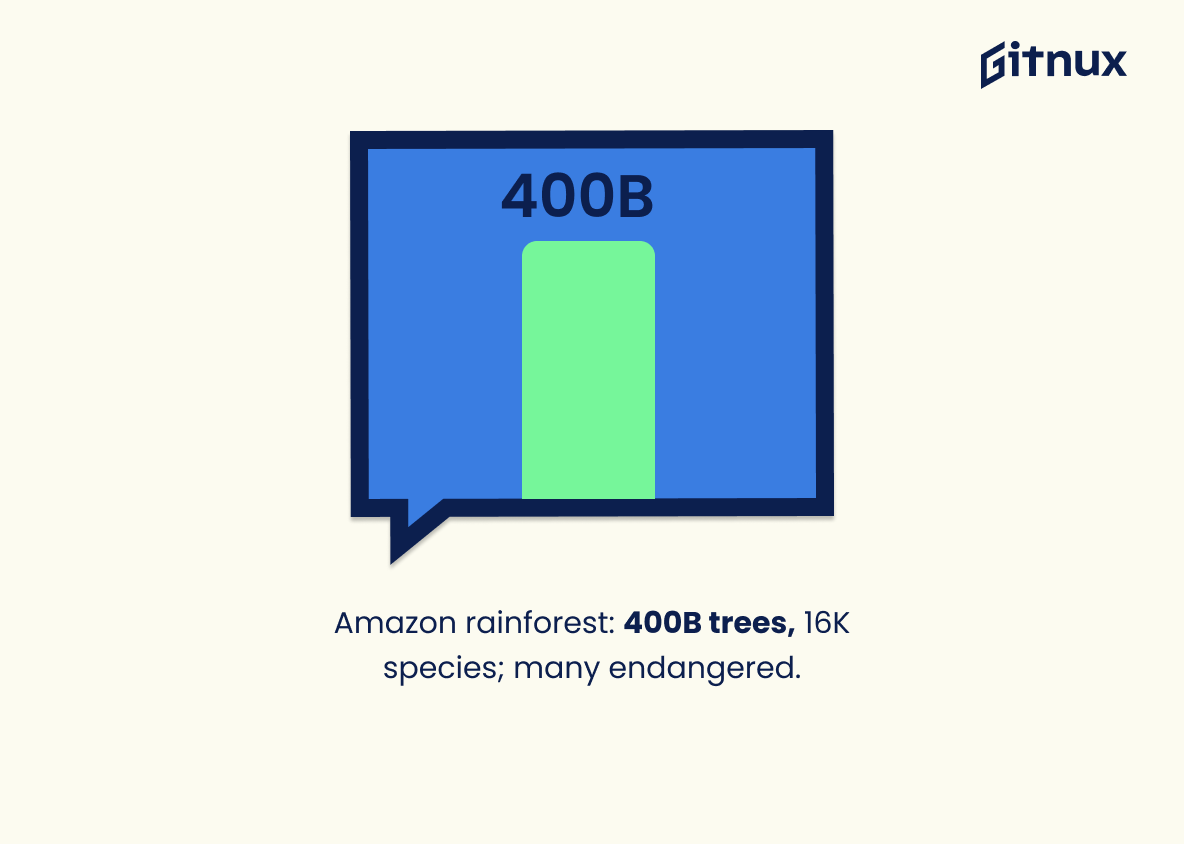Every heartbeat in the wild reverberates as a crucial chord in the enchanting symphony of our ecosystem. Our planet thrives on a delicate balance, a vast biodiversity where every creature, no matter how big or small, holds an irreplaceable role. Among this diverse cast of characters, however, some are fading, their quintessential roles under the ruthless knife of endangerment. Today, we shed light on the alarming reality that these species face through stark and sobering endangered species statistics. This blog post is not just about the numbers, but a call to raise awareness and inspire action to conserve the beautifully diverse tapestry of life on Earth. Let’s delve deeper into the disconcerting reality to understand why every life in the animal kingdom counts and how we, as inhabitants of this shared home, can and must make a difference.
The Latest Endangered Species Statistics Unveiled
More than 31,000 species are threatened with extinction, which is more than 27% of all assessed species.
Highlighting the startling figure of over 31,000 species facing the brink of oblivion, equivalent to more than a quarter of all evaluated species, paints a grim tableau of our planet’s plight. This chilling revelation unveils the shadowy reality lurking behind our world’s environmental health and biodiversity status. It screams the urgent need for intervention to protect our vulnerable inhabitants. In a post woven around endangered species data, this number is a dire wake-up call that underlines the severity and immediacy of a planet under siege. It’s not just a statistic, it’s a pulsating SOS from nature, a silent plea that calls us to reassess our actions and address this existential crisis facing our co-inhabitants before the scales of biodiversity tip towards an irreversible loss.
The Earth is currently experiencing its sixth major animal extinction event.
In the masterful orchestra of life, each species plays a significant note. Yet, the alarming fact of our Earth experiencing its sixth major animal extinction event strikes a dissonant chord. This stark statistic threads a grim narrative through our blog post about Endangered Species Statistics, painting an urgent picture of the multitudes of species blinking out from our biodiversity tapestry.
Like an echo reverberating off the mountains, this single statistic amplifies the urgency of mitigating the loss of vital animal species. We are not merely discussing abstract numbers and distant species, but an existential crisis directly impacting the biotic pageant on our shared home – planet Earth. Every reader, in bearing witness to the reality of this statistic, becomes an involved stakeholder, understanding that the loss of these species may well signify our loss in preserving Earth’s ecological balance.
The potency of this event, as laid bare by this statistic, adds powerful, compelling context to our discourse on threatened species. The veil lifts off the reality that the fragile, interconnected web of life teeters on the brink of an unprecedented catastrophe. Thereby, the statistic stands as a clarion call, awakening and inviting one and all to enact titanic shifts, both personally and collectively, towards preserving our vanishing wildlife.
Up to 1 million species are threatened with extinction, many within decades, according to a report by Intergovernmental Science-Policy Platform on Biodiversity and Ecosystem Services (IPBES).
Impressing upon readers the sheer gravity of the endangered species situation, the Intergovernmental Science-Policy Platform on Biodiversity and Ecosystem Services (IPBES) reports that up to 1 million species are teetering on the brink of extinction – with many projected to vanish within decades. This striking statistic paints a critical picture of our planet’s rapidly shrinking biodiversity. It exposes the urgency needed to address this global crisis through concerted conservation efforts and sustainable environmental practices. Not just a collection of numbers, but this statistic serves as a dire warning, a clarion call to action to rescue the world’s vulnerable species from the jaws of oblivion.
More than 98% of the threatened species are affected by human activities.
Undeniably, the criticality of the fact that human activities sway over 98% of endangered species elevates manifold in the realm of Endangered Species Statistics blog post. Any reader delving into such posts is seeking to understand the risks and imbalances hammering our ecosystem. This revealing piece of statistic functions as a jarring wakeup call, undraping the magnitude of human intervention in jeopardizing the intricate harmony of nature. It also nudges readers to introspect on the direct or indirect contributions they might be making towards this adverse impact, thereby stoking an inner call for change. Simultaneously, it underscores the urgent need for sustainable practices and stricter policies, making this statistic a linchpin in guiding discussions on this topic.
Around 20% of the world’s known reptile species are considered at risk of extinction.
In the saga of Endangered Species Statistics, the haunting insight of ‘Around 20% of the world’s known reptile species teetering on the brink of extinction’ strings a chilling chord. Painted against this gloomy backdrop, every fifth reptilian species you might imagine nests precariously on an evaporating lifeline, a stark testament to the heightened degradation of natural habitats and the systemic crunch of environmental issues. It forms a startling reminder of the consequences of continuing these trajectories. This alarming statistic is a call to arms, amplifying the urgency of conservation efforts and highlighting the dire need for awareness, change and global action. It serves as a harsh reflection of our impact on biodiversity and an essential gauge of the scale of work needed to rectify the balance.
Of the 8,300 animal breeds known, 8% are extinct and 22% are at risk of extinction.
Imagining a planetary tapestry, rich with 8,300 vibrant threads representing diverse animal breeds, one finds it alarming to comprehend that almost one thread out of every ten has already faded into the darkness of extinction. Not only that, but an additional 22% of these threads, a fifth of the tapestry, are wobbling on the silken precipice, threatened with unraveling. These figures underscore the urgency our planet faces in losing its life-colors—these are the telling numbers behind our world loudly whispering an S.O.S in terms of endangered species.
Almost 12% of the world’s birds are threatened with extinction.
In painting a vivid picture of the global Endangered Species crisis, ponder on this nugget of disturbing information: Close to 12% of global bird species flit precariously on the brink of extinction. This percentage is not merely a number; it symbolizes a profound disintegration of our planet’s biodiversity. Each bird species plays a unique role in the intricacies of the ecosystem, from pest control to pollination, seed dispersal to scavenging. Their rapid decline might not only silence their melodious morning songs, but also unravel crucial threads in the endlessly complex web of life, ultimately disturbing the natural balance. This figure serves as a potent clarion call, heralding that the time to act to preserve our feathery friends, and subsequently our ecosystems, is now.
In the U.S., 99% of listed species have avoided extinction.
Going by the captivating statistics that floats the notion ‘In the U.S, 99% of listed species have steered clear of extinction’, it’s reminiscent of an adrenaline-charged thriller where the odds are seemingly stacked against our biodiversity, yet a glimmer of hope shines through. This statistic breathes optimism into the narrative of endangered species, painting a picture not solely of despair, but of relentless survival and success against all odds. It underlines the effectiveness of conservation efforts and signifies the inherent resilience of nature, putting into perspective the power of collective action and adaptive strategies there in the realm of biodiversity conservation. It’s impossible to ignore such a profound milestone, with it fundamentally altering the discourse in our blog post about Endangered Species Statistics. Instead of casting a pall of doom, this statistic imparts a tale of survival, thus empowering readers to understand the impact of their actions and the potential they hold to foster change. An undeniable beacon for progress, it ultimately propels the narrative from mere statistical presentation to inspiring storytelling.
More than 69% of the estimated 50,000 species native to the United States are considered “at risk”.
Highlighting that a startling proportion, over 69%, of the approximately 50,000 species native to the United States confronts the risk of extinction, underscores the staggering reality of our current biodiversity crisis. This figure serves as a somber reminder that we exist in an era fraught with environmental challenges that threaten the majority of our country’s unique fauna and flora. Within the framework of a blog post on endangered species statistics, this statistic becomes a powerful beacon, illuminating the immediate and pressing need to address species decline. It punctuates the discourse with a call-to-action, painting a stark picture of the biodiversity peril, effectively rallying readers to understand the magnitude of the issue and encouraging them to contribute towards conservation efforts in their capacity.
In Africa, fewer than 43,000 lions remain in the wild.
Highlighting the figure of fewer than 43,000 lions remaining in the wild in Africa paints a somber picture on the precarious state of the species. This statistic serves as a powerful reminder that every number in wildlife conservation has a living, breathing entity behind it. In the post about Endangered Species Statistics, this data point underscores the urgent need for robust conservation measures, laying bare the stark reality of where we stand in the battle against wildlife extinction. Therefore, it isn’t a mere statistic, but a clarion call for action, a barometer of our effort to preserve biodiversity, and a litmus test of our commitment towards environmental stewardship.
96% of all known lemur species are at risk of extinction.
Reflecting upon the stark reality that a whopping 96% of all known lemur species teeter on the brink of extinction, it’s evident that we stand at a critical juncture in our planet’s natural history. This number isn’t just concerning; it screams urgency and underscores the devastating trend of biodiversity loss. In penning a blog post on Endangered Species Statistics, the lemur’s crisis represents a formidable case study, illuminating the severity of anthropogenic impacts on ecosystems and urging readers to understand the gravity of the situation we now face. The haunting echo of this statistic serves as a potent reminder of the responsibility we share to protect and preserve life’s rich and varied tapestry for generations yet to come.
The Amazon rainforest alone is home to around 400 billion individual trees representing 16,000 species, many of which are endangered.
Delving into the heart of this fascinating statistic reveals the sheer scale of biodiversity nestled within the Amazon rainforest, also known as the ‘lungs of the Earth’. The remarkable vastness of approximately 400 billion trees, enshrining an overwhelmingly diverse population of 16,000 species, becomes particularly poignant when considering its context in a discourse on Endangered Species Statistics.
Each species plays a unique role in maintaining ecological balance, so the endangered status of many paints a sobering picture about the environmental crises we’re facing. The statistic serves as a stark call to garner urgent attention towards large-scale conservation efforts thus helping to safeguard not only individual endangered species but also the impressive, often underestimated, biodiversity of our planet. It reinforces the scale of potential loss – a significant percentage of the world’s total species that are teetering on the brink of extinction – rendering it a cornerstone in any narrative emphasizing the urgency of biodiversity conservation.
Conclusion
In our exploration of endangered species statistics, we have unravelled some alarming trends alongside a few glimmers of hope. The danger threatening numerous species indicates our pressing responsibility to rectify our actions towards biodiversity. As we understand the profound connection between the survival of these species and our own quality of life, we must reevaluate our conservation practices. While sobering, these statistics can serve as a catalyst for change, prompting us all to contribute to the preservation of endangered species in whatever way we can. Our collective, consistent efforts can potentially reverse the possibilities of extinction, creating a thriving, sustainable world for all inhabitants.
References
0. – https://www.www.awf.org
1. – https://www.www.esa.org
2. – https://www.www.iucn.org
3. – https://www.www.fao.org
4. – https://www.ipbes.net
5. – https://www.www.birdlife.org
6. – https://www.www.biologicaldiversity.org
7. – https://www.www.fws.gov
8. – https://www.rainforests.mongabay.com.
9. – https://www.www.iucnredlist.org
